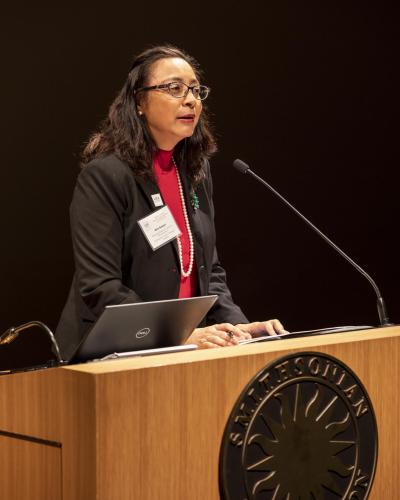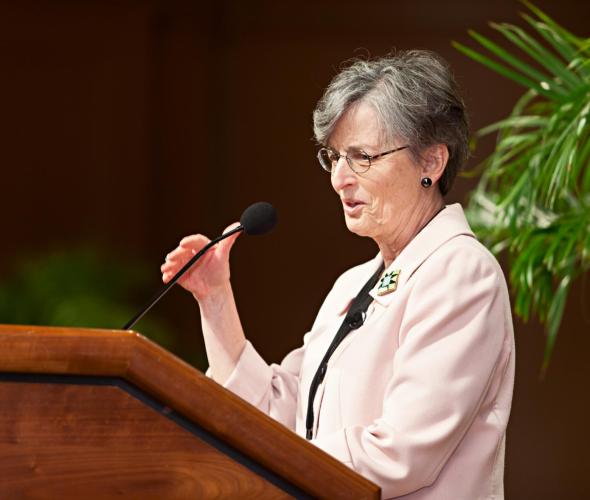
Oris Sanjur, current acting director of the Smithsonian Tropical Research Institute, speaking at the "Working Women: The Smithsonian Institution as a Case Study" symposium on December 18, 2019. Photograph by Michael Barnes.
Are American women underrepresented in science? According to the National Science Foundation, in 2017 33% of men were employed in science and engineering occupations—and only 15% of women. Of the women working in science and engineering, on average these women earn $17,000 less than their male peers. In addition, nearly twice as many women as men are employed part-time.
In response to such inequities, we at the Smithsonian American Women's History Initiative, Because of Her Story, aims to tell the lesser-known stories of women in science past and present. We also work to share research by women and highlight opportunities to make the sciences more inclusive, especially for women of color.
From October 20–22 and 27–29, 2020 you can join us for American Women of Science: Recovering History, Defining the Future, a free virtual scholarly symposium. Sessions will include a mix of keynotes, panels, lightning talks, and fireside chats.

Dr. Eva Pell speaking at the National Museum of Natural History, 2012, Courtesy of National Museum of Natural History, Image no. NMNH-NHB2012-00057.
Notable women leading current and past science research at the Smithsonian will offer keynotes, including Dr. Eva Pell, former Smithsonian undersecretary for science, and Dr. Oris Sanjur, acting director of the Smithsonian Tropical Research Institute. In addition, Smithsonian Secretary Lonnie G. Bunch, III will lead a conversation with Dr. Katrina Pagenkopp Lohan of the Smithsonian Environmental Research Center.
According to PEW Research, in 2016 only 16% of STEM jobs in the United States were held by African Americans and Latinos, while white Americans held 69% of STEM jobs. With the knowledge that many minorities are disproportionately underrepresented in the sciences, one of the symposium's goals is to discuss opportunities to define a more diverse, equitable, and inclusive future. Program highlights include:
- The Price of Being a Minority Woman in Science: Dr. Shirley Malcom Reflects on 44 Years of The Double Bind on October 20
- Mujeres de STRI: From Exclusion to Influence, Women's Role in the Making of a Scientific Community at the Smithsonian Tropical Research Institute on October 21
- African American Heritage on the Chesapeake Bay and the Promotion, Integration and Sustainability of Minority Women in the Aquaculture Industry on October 27
- Agencies in Action: Lessons Learned from Diversity Initiatives at U.S. Scientific Institutions on October 28
- Sheila Minor Huff: A Trailblazing Scientist and Hidden Figure No More on October 28
View the full schedule for American Women of Science: Recovering History, Defining the Future. Register to attend panels and virtual networking events.
The Smithsonian American Women's History Initiative, Because of Her Story, funds annual scholarly symposia to deepen our knowledge and appreciation of women's contributions in American society in the contemporary moment and the historical past, to stimulate conversation about the ways in which they have changed, and to understand their continuing influence in American and global contexts. To support more women's history research, you can donate to the Smithsonian American Women's History Initiative. Sign up for our newsletter to stay in touch.